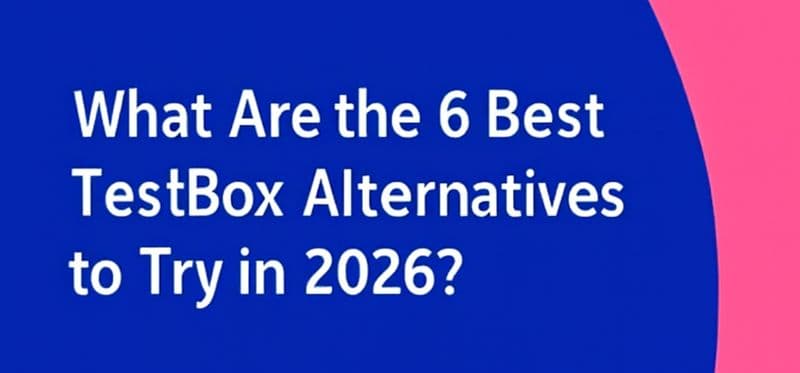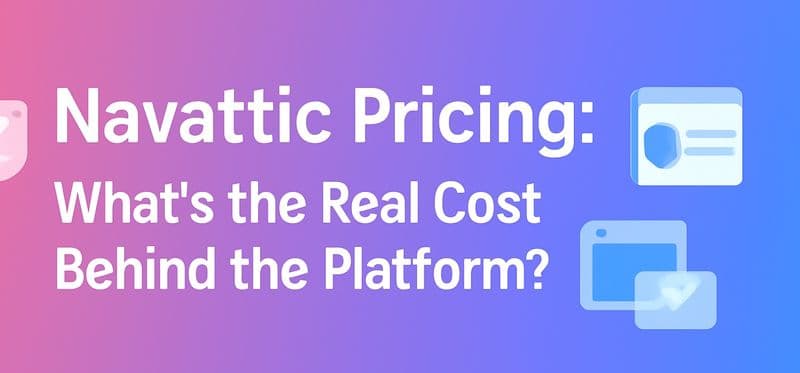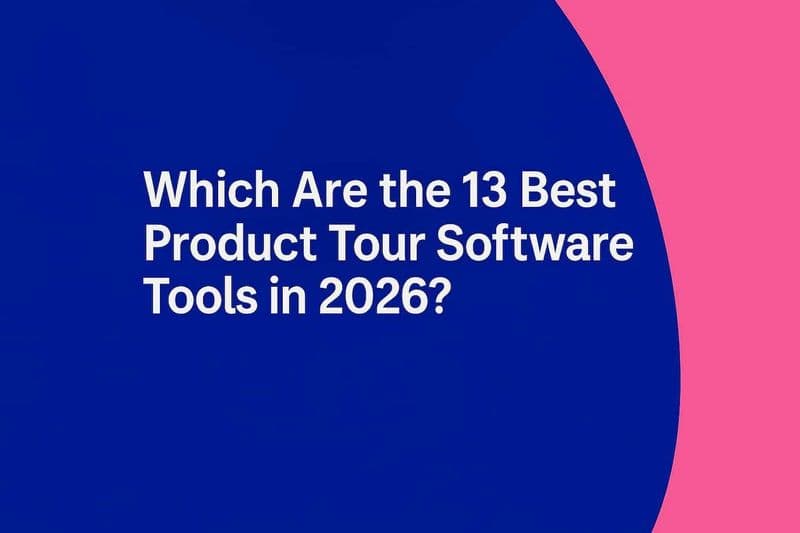Add Table of Contents
TL;DR
|
Artificial Intelligence isn’t just the future; it’s already transforming the present. With over 70% of businesses investing in AI in 2025 (Gartner), there’s never been a better time to build around it. But while the opportunity is massive, not every idea is scalable, sustainable, or even necessary.
If you’re a founder, product builder, or agency owner exploring AI SaaS ideas, you need a solution that solves a real problem, generates consistent value, and can scale across industries. In this blog, we’ll break down 10 actionable, real-world AI SaaS business ideas, each with clear examples, core features, use cases, and why it’s worth building in today’s market.
Whether you’re after AI-based SaaS ideas in healthcare, marketing, finance, or customer support, this guide will help you pick a winner and avoid wasting time on a dud.
Looking for a Startup Idea? What Are the Best 10 AI SaaS Ideas That Could Print Cash?
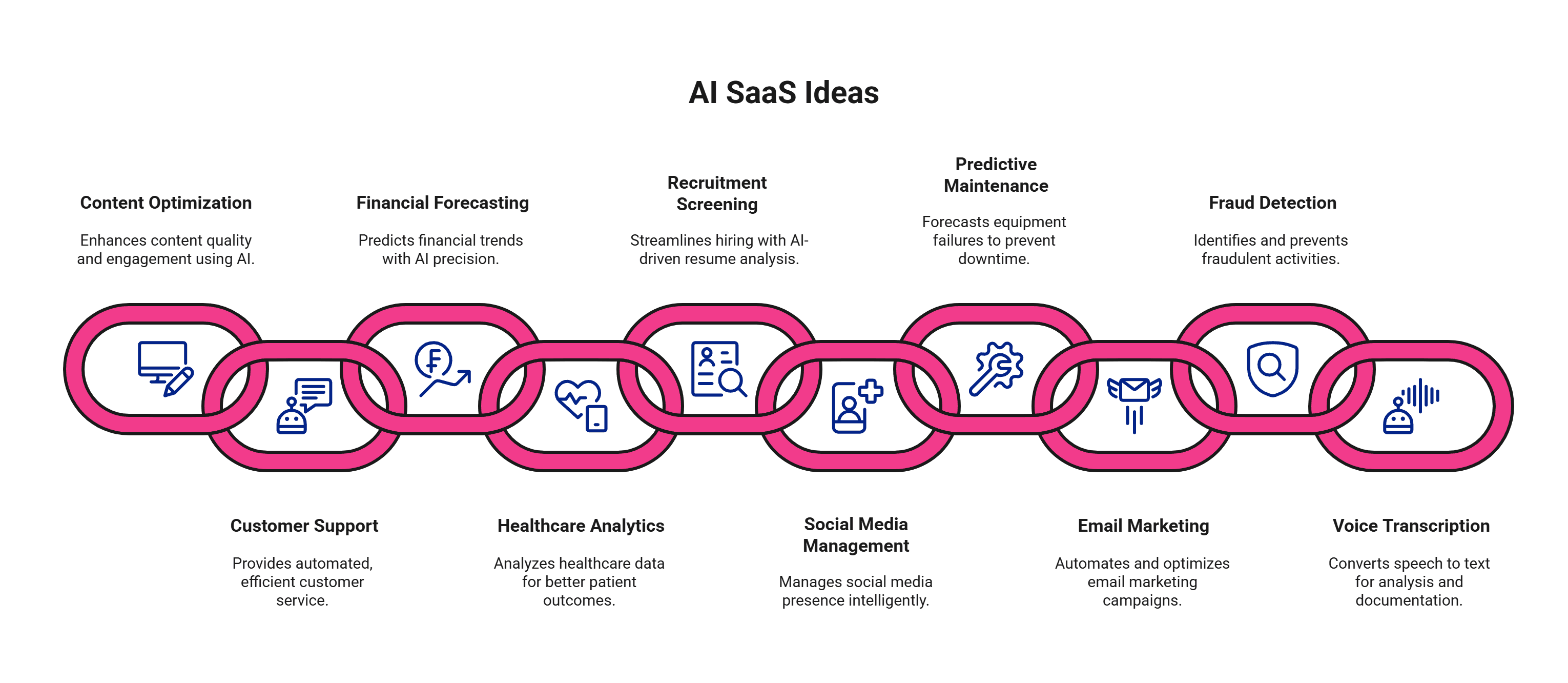
Explore 10 actionable AI SaaS startup ideas, each backed by a real-world problem, a smart solution, key features, use cases, and current competitors. These aren’t just concepts; they’re high-demand, build-ready opportunities you can scale today.
1. What Is an AI-Powered Content Optimization Platform?
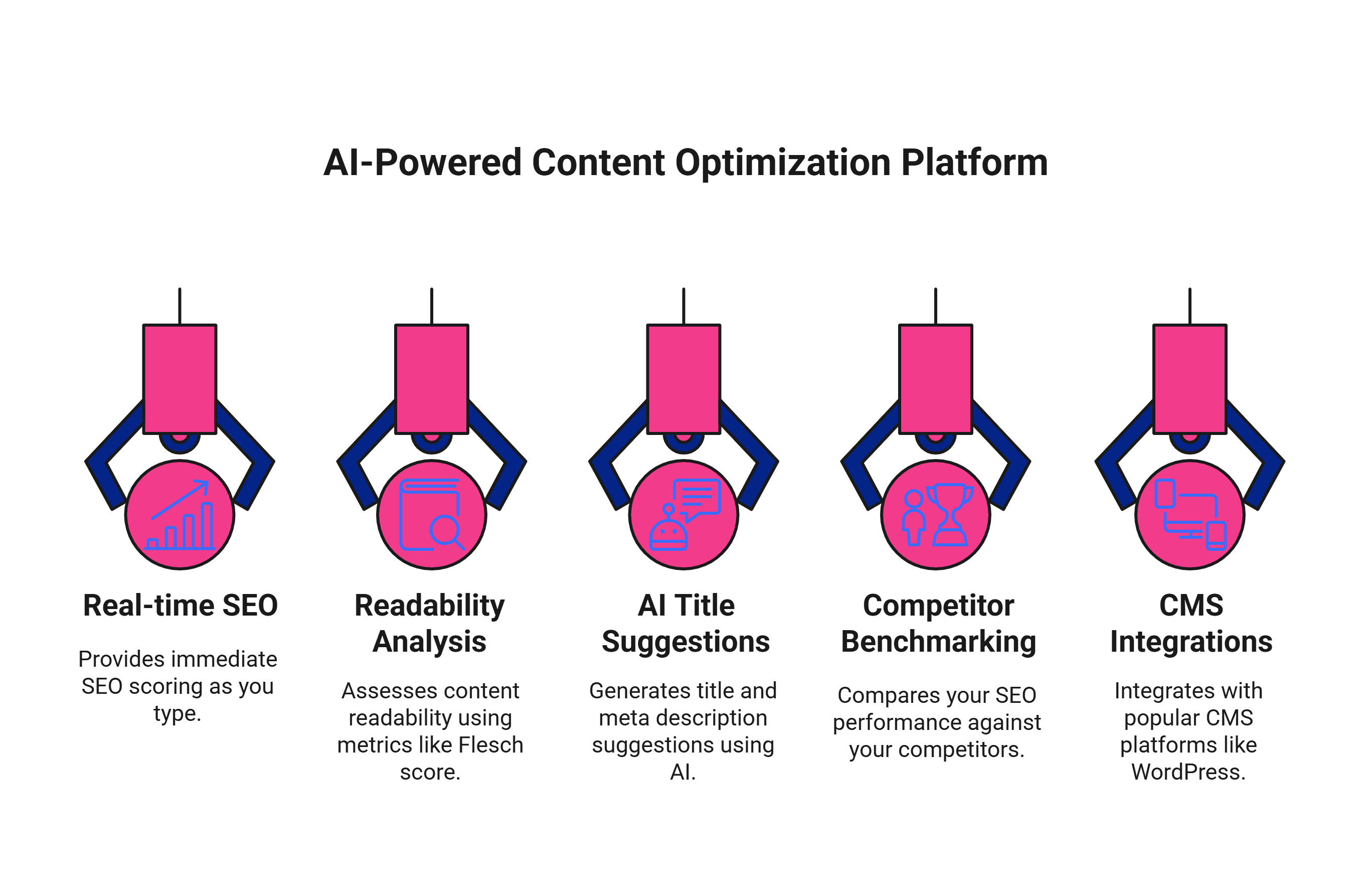
Problem: Content creation is easy. Great content shouldn’t be a guessing game. Yet many small businesses struggle to create SEO-optimized posts that actually drive traffic and conversions, because they’re juggling too much, or simply don’t know where to start.
Solution: A platform that uses AI to audit content in real time, suggesting improvements for SEO, readability, tone, keyword use, and structure.
How It Works:
It analyzes blog drafts, landing pages, or website content.
It compares your content against top-ranking competitors.
It provides instant suggestions (e.g., replace passive voice, add internal links, include missing keywords).
What Makes This AI SaaS Idea Stand Out:
Real-time SEO scoring
Readability analysis (Flesch Score, sentence structure)
AI-generated title/meta suggestions
Competitor benchmarking
2. How Does an Automated Chatbot Service Transform Customer Service?
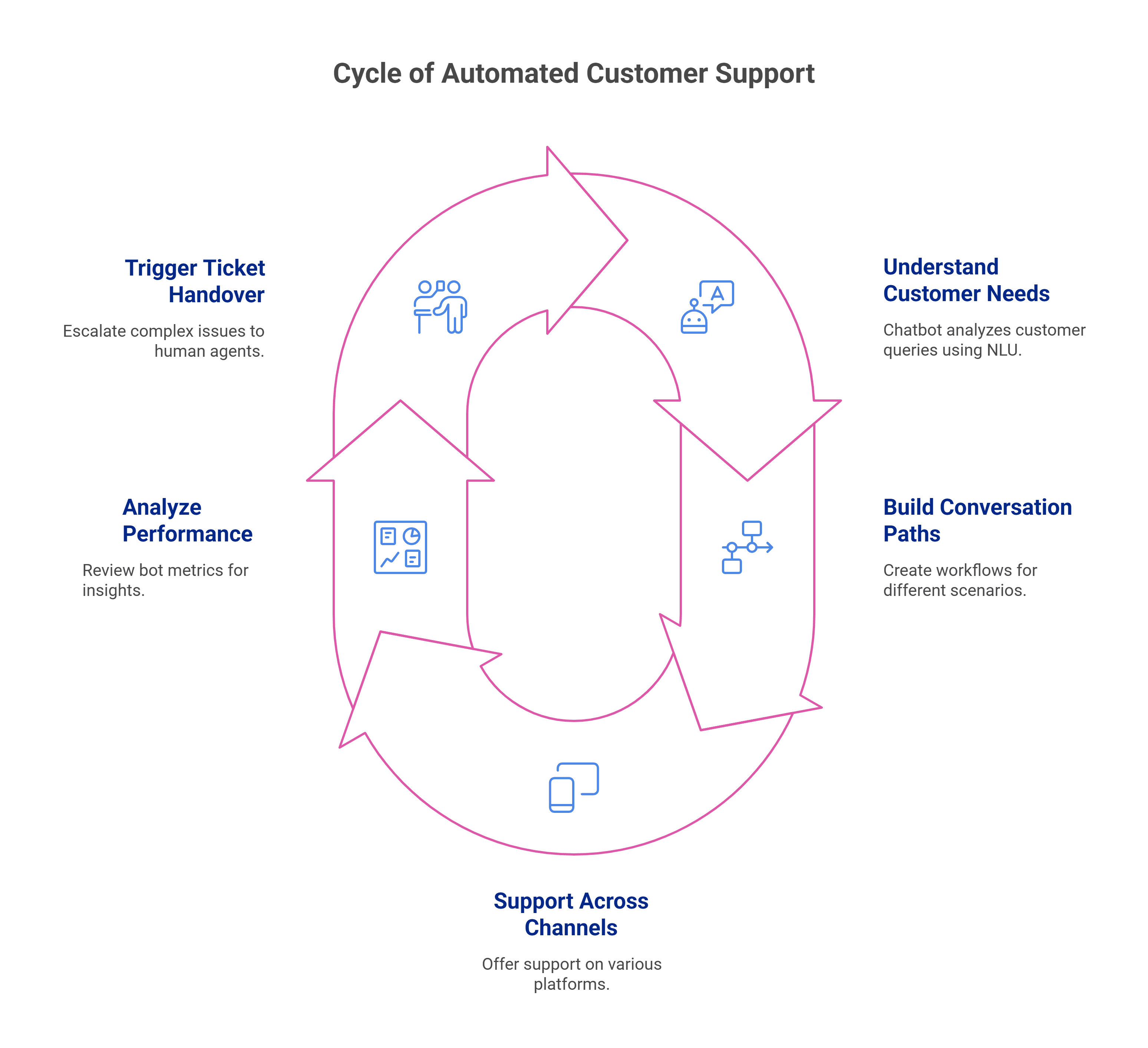
Problem: Customer expects 24/7 Customer support. But hiring and managing a large support team isn’t scalable for most businesses.
Solution: An AI-powered chatbot that understands customer queries and offers helpful answers instantly, no coding required.
How It Works:
Users upload their FAQ, docs, and knowledge base.
The bot uses NLP to understand and respond to queries.
It escalates complex cases to human agents.
Core Features That Power This Solution:
Natural Language Understanding (NLU)
Workflow builder for conversation paths
Multi-language and multi-channel support (email, WhatsApp, FB Messenger)
Analytics dashboard to review bot performance
Support ticket handover triggers
3. How Can an AI-Based Financial Forecasting Tool Make Financial Planning Easier for Founders?
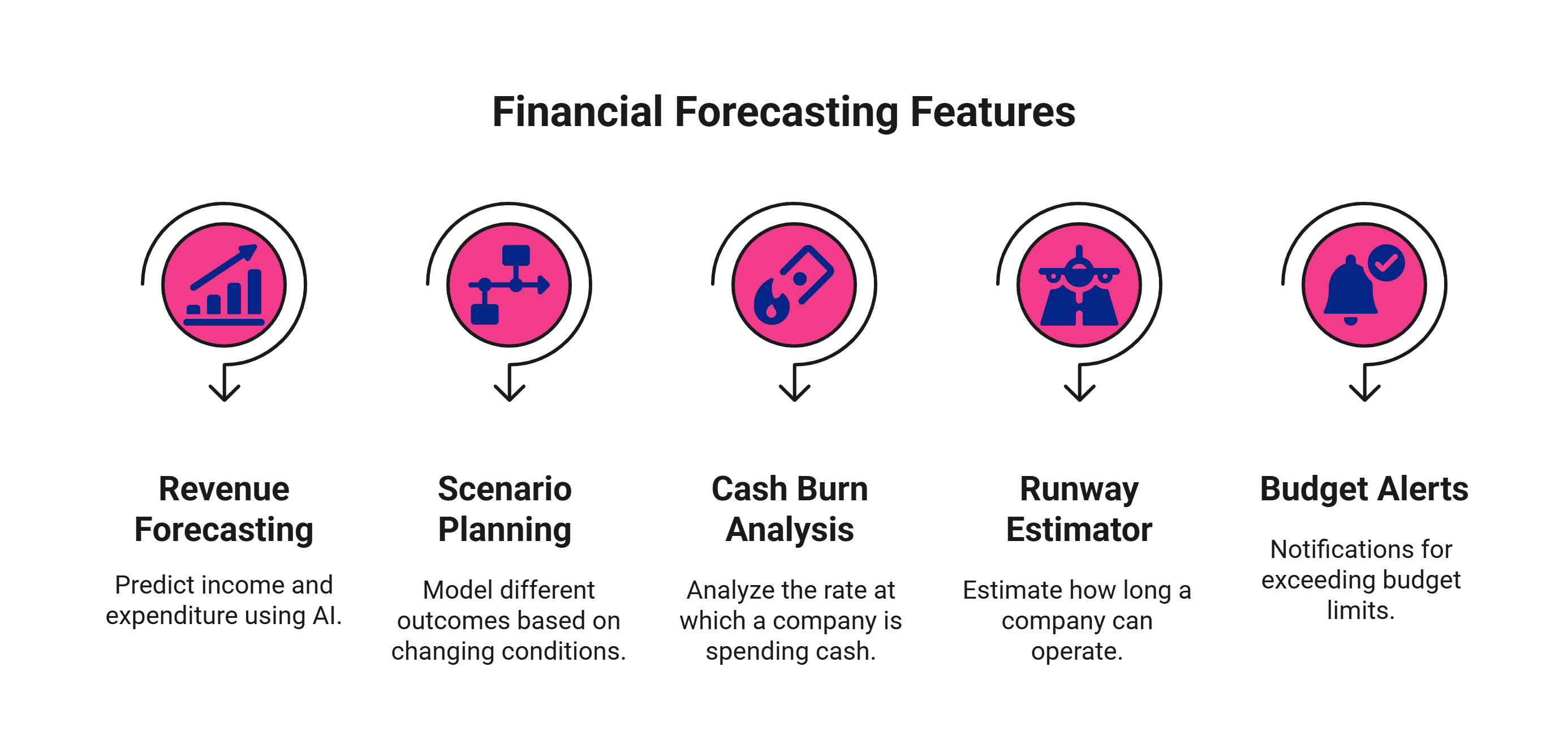
Problem: Financial planning is difficult, especially for founders who aren’t finance experts. Most use static spreadsheets that are prone to error and guesswork.
Solution: A tool that connects to accounting platforms, ingests historical data, and uses AI to predict cash flow, runway, and revenue trends.
How It Works:
Connect your accounting tools (Xero, QuickBooks).
AI processes past data and external market trends.
Generates dynamic financial SaaS models with interactive charts.
Why This AI SaaS Idea Works:
Revenue and expense forecasting
Scenario planning (e.g., what if churn rises?)
Cash burn analysis
Fundraising runway estimator
Alerts for budget overruns
4. How Can Smart Healthcare Analytics Improve Patient Outcomes?
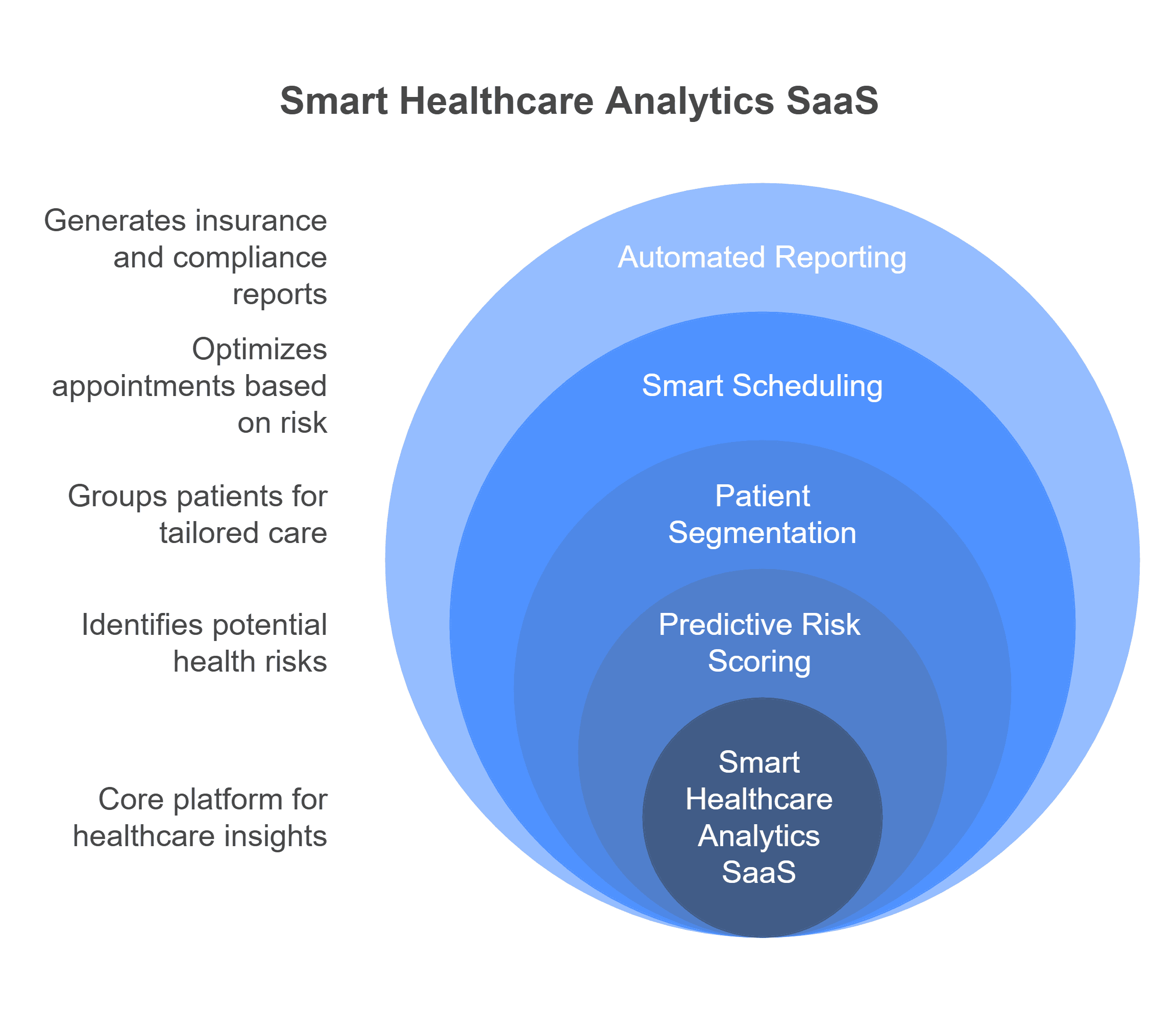
Problem: Healthcare providers collect enormous data, but they can’t easily turn that data into insights that improve care or operations.
Solution: A platform that analyzes electronic health records (EHRs) to detect patterns, improve diagnoses, and suggest treatment paths.
How It Works:
Connects to hospital/clinic data sources
Uses machine learning to detect trends and predict outcomes
Helps doctors make data-informed decisions
Smart Features That Drive Real Results:
Predictive risk scoring
Patient segmentation
Smart scheduling based on risk factors
Automated insurance and compliance reporting
5. Can AI-Driven Recruitment and Resume Screening Improve the Hiring Process?
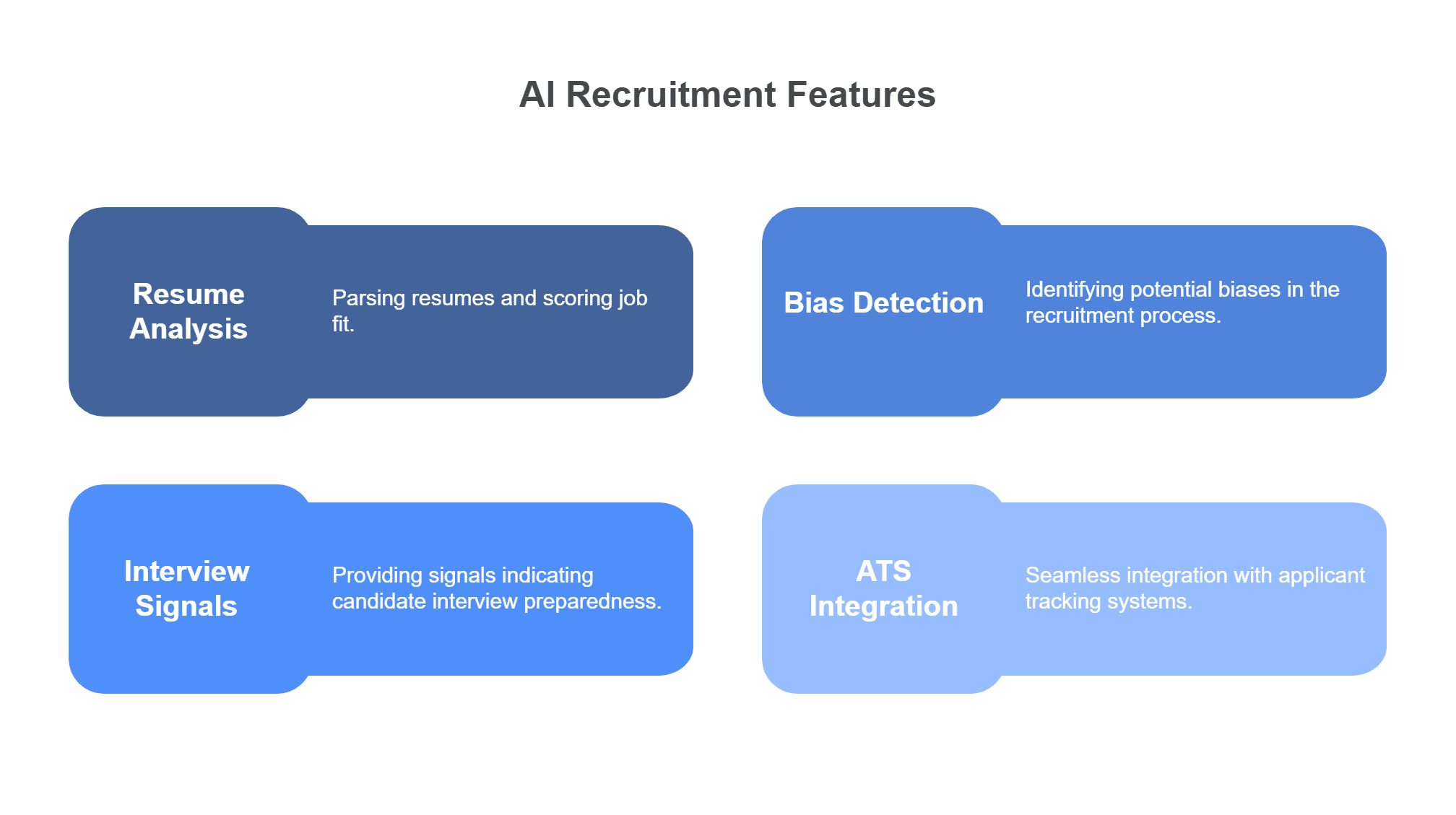
Problem: Screening resumes manually is slow, biased, and inconsistent. Recruiters often miss hidden gems.
Solution: An AI-powered hiring assistant that scores resumes, recommends candidates, and detects potential bias.
How It Works:
HR uploads job descriptions and resumes.
The AI scores resumes based on skills, experience, and language tone.
Flags top candidates and explains the reasoning.
Inside the Tech: Features That Matter:
Resume parsing and job fit scoring
Bias detection (e.g., gender, age)
Interview readiness signals
ATS integration (Greenhouse, Lever)
6. What Makes an Intelligent Social Media Management Suite Essential for Teams?
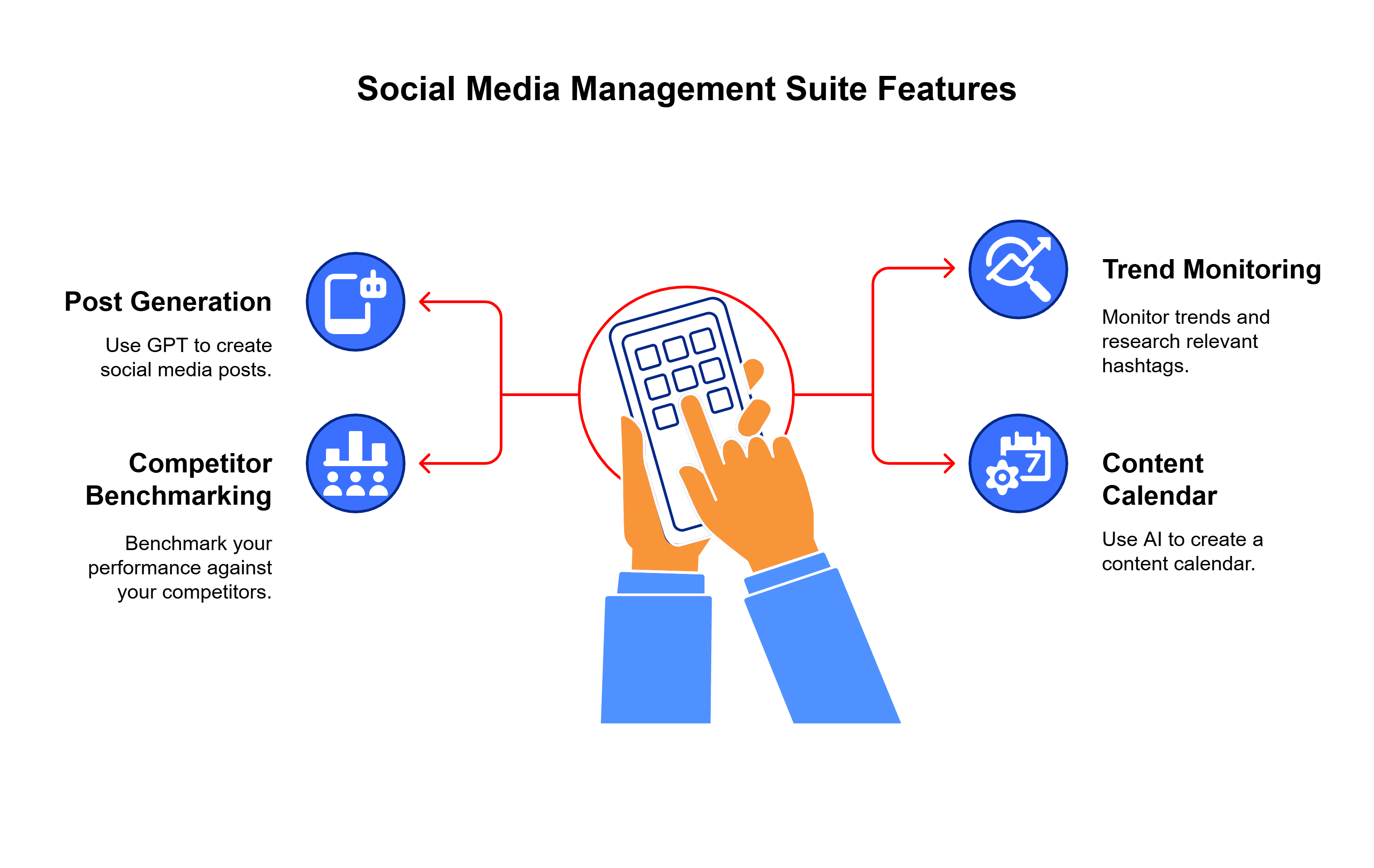
Problem: Managing multiple social channels is time-consuming. Teams often post randomly and don’t know what works.
Solution: A smart platform that creates, schedules, and optimizes social posts using AI.
How It Works:
Connect social accounts
AI suggests quality content ideas and the best posting times
Tracks performance and recommends next steps
Powerful Capabilities Behind This AI Solution:
GPT-powered post generation
Trend monitoring and hashtag research
Competitor benchmarking
AI-driven content calendar
7. How Can Predictive Maintenance for Manufacturing Prevent Costly Downtime?
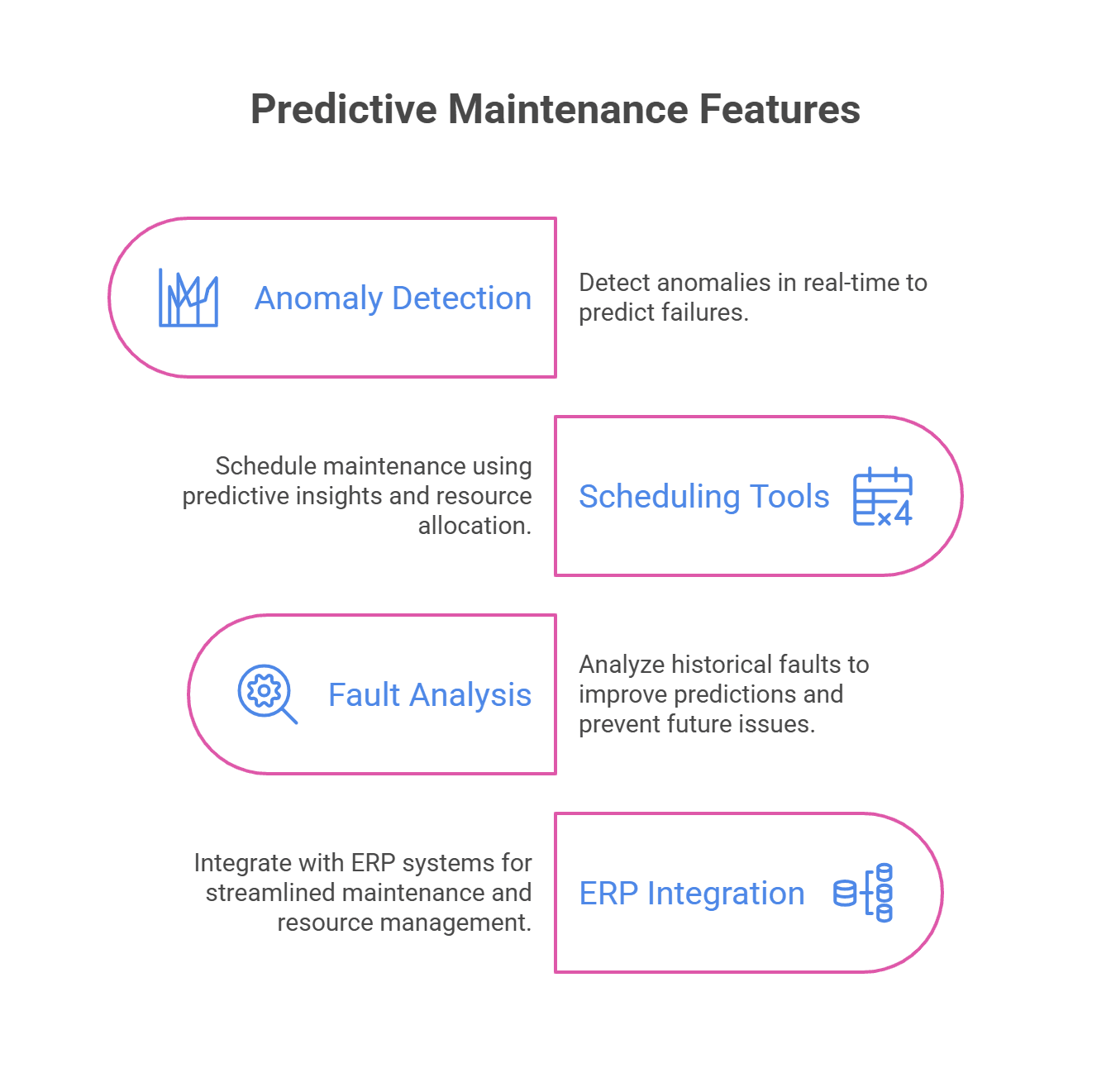
Problem: Factory downtime is expensive. Most businesses don’t know equipment is failing until it’s too late.
Solution: An AI tool that collects machine data and predicts failures before they happen.
How It Works:
Connects to sensors and machine logs
Analyzes usage, temperature, and vibration data
Alerts technicians to upcoming breakdowns
Breakdown of Its Game-Changing Features:
Real-time anomaly detection
Maintenance scheduling tools
Historical fault analysis
ERP integration
8. Is AI-Powered Email Marketing Automation the Secret to Higher Conversions?
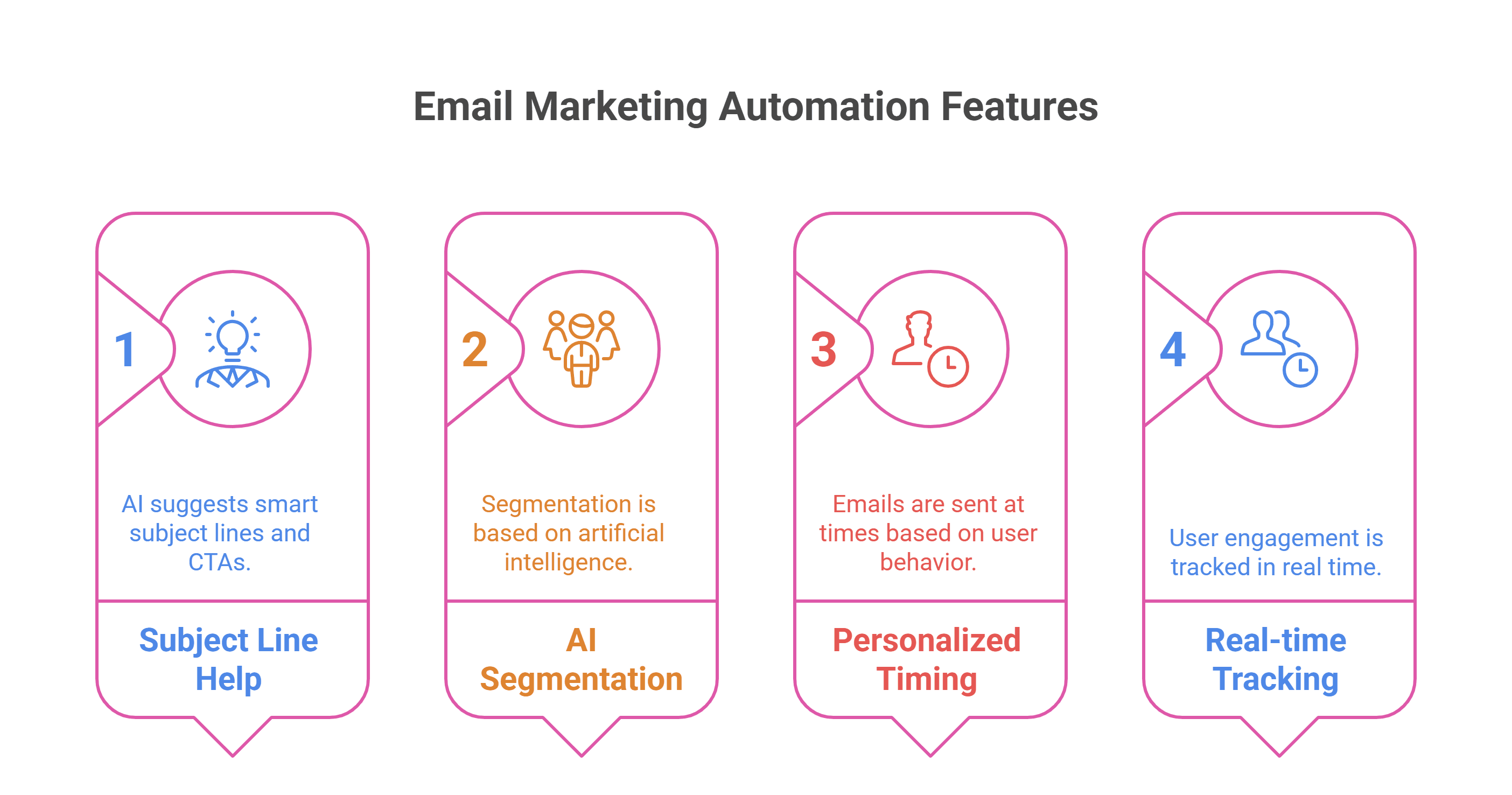
Problem: Email campaigns often underperform due to poor segmentation, bland subject lines, or bad timing.
Solution: An email tool that optimizes every campaign element, content, timing, and audience, using AI.
How It Works:
Users set campaign goals
AI generates variations and runs A/B tests
Learns from each campaign to improve future results
The Brains Behind the Product:
Smart subject line and CTA suggestions
AI-based segmentation
Personalized timing based on behavior
Real-time user engagement tracking
9. Could an Advanced Fraud Detection Platform Protect Your Business in Real Time?
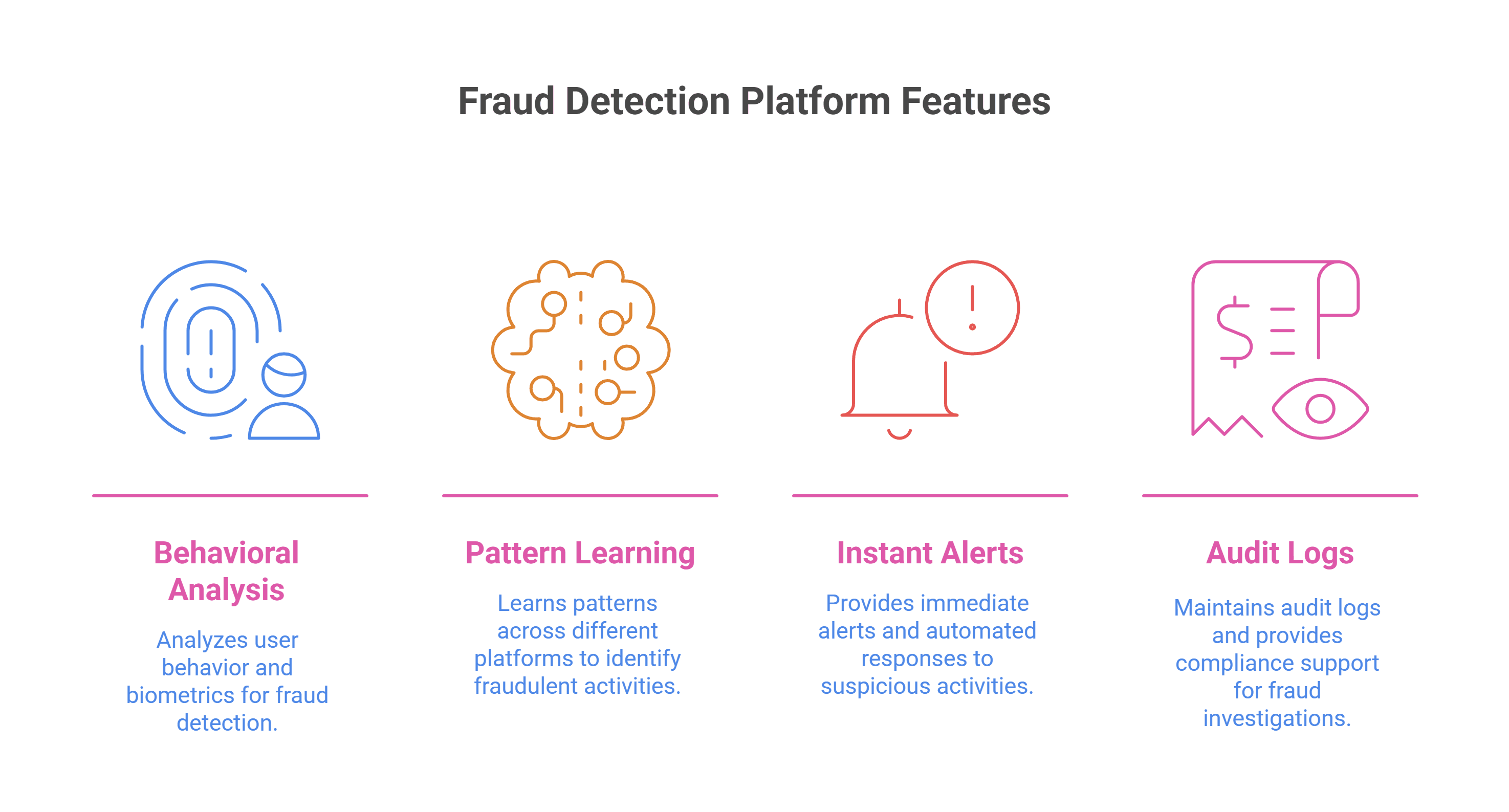
Problem: Fraudsters adapt quickly. Manual rules can’t catch all fraudulent behavior in fintech, e-commerce, or online education.
Solution: A fraud detection engine that uses behavior analytics and machine learning to flag suspicious activity.
How It Works:
Monitors transactions and user behavior
Builds risk profiles in real-time
Blocks or flags anomalies
Functionality That Solves Real Problems:
Behavioral and biometric analysis
Pattern learning across platforms
Instant alerts and automatic responses
Audit logs and compliance support
10. Is Voice-to-Text Transcription and Analysis the Solution for Busy Teams?
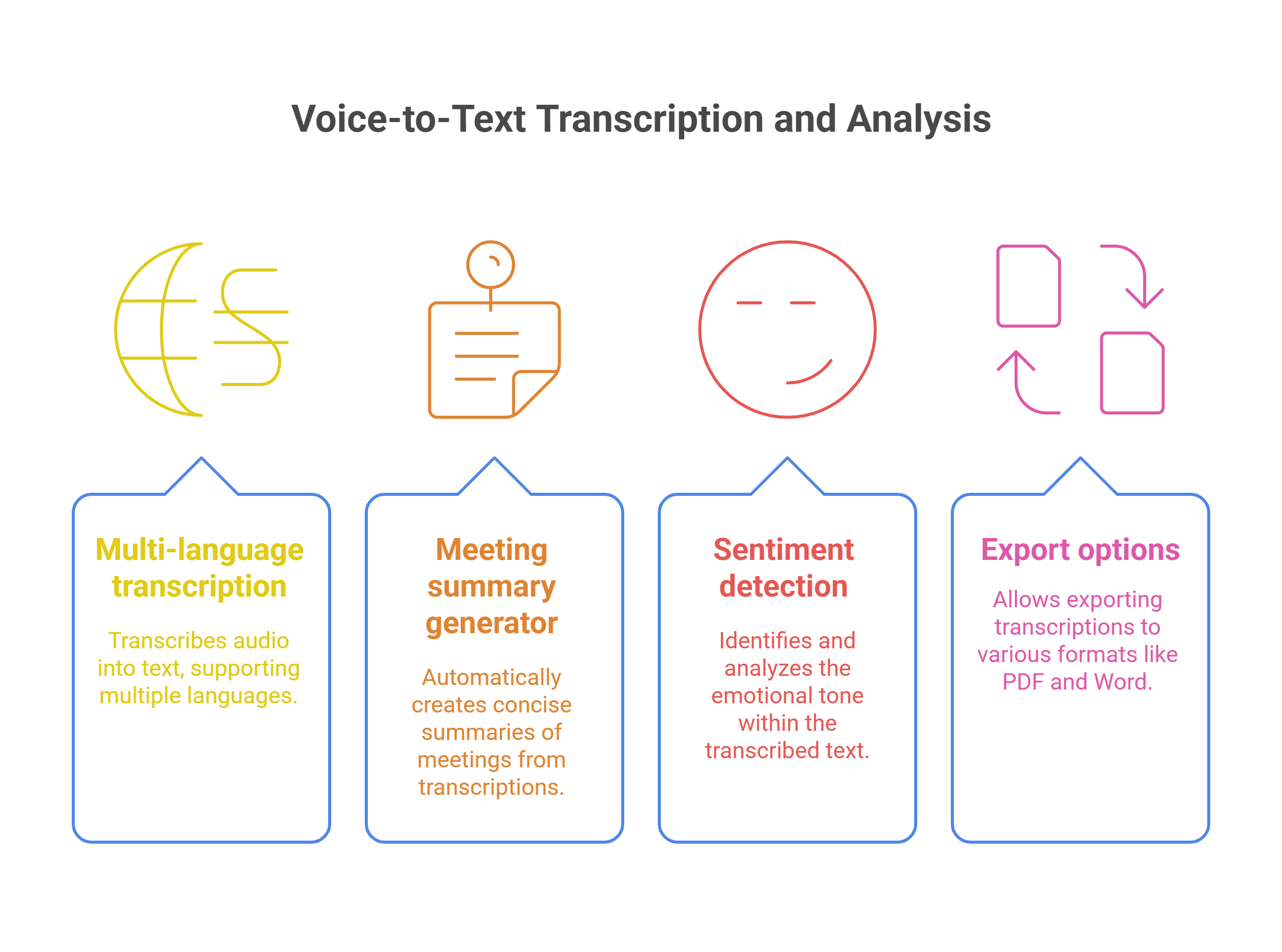
Problem: Meetings, interviews, and calls are hard to track and summarize. Manual transcription takes time and is prone to error.
Solution: A voice AI tool that not only transcribes but also summarizes, tags speakers, and highlights key insights.
How It Works:
Upload audio or connect live meetings
AI transcribes and adds speaker IDs
Extracts sentiment, key actions, and topics
Key Capabilities You Can Build Around:
Multi-language transcription
Meeting summary generator
Sentiment and emotion detection
Export to PDF, Word, or Notion
How Can SmartCue Help Turn Your AI SaaS Ideas into a Demo That Sells?
You’ve built something amazing. Maybe it’s a content optimization tool. Or a predictive analytics platform. Whatever your AI SaaS ideas, explaining what it does in a way that sticks? That’s a whole different challenge.
SmartCue helps you create personalized, interactive product demos that walk your users through your SaaS product, step by step, benefit by benefit. It’s built for SaaS teams who want to shorten the sales cycle, improve onboarding, and make every feature feel instantly valuable.
Here’s how SmartCue adds power to your AI SaaS ideas:
Show real value with role-based, use-case-driven, and guided walkthroughs
Reduce churn with intuitive, no-code onboarding experiences
Let your product speak for itself, without sales calls or lengthy docs
Whether you’re launching or scaling your next big AI SaaS business idea, SmartCue helps you win attention, build trust, and convert faster, right from day one.
Try 14-days free trial and give your product the demo it deserves.
Conclusion
Choosing one of the best AI SaaS ideas is the first (and possibly hardest) step in launching a successful AI product. But if you’ve made it this far, you now have a list of AI SaaS ideas grounded in real-world problems, each one with clear market demand, revenue potential, and room for innovation.
The best AI SaaS ideas aren’t always the flashiest; they’re the ones that solve boring, expensive, time-consuming problems really well. From content optimization and customer support to financial forecasting and healthcare analytics, these opportunities span across industries and business sizes.
Your next big breakthrough might be hiding in plain sight, just waiting for you to take action.
Now it’s your turn: Which of these AI SaaS ideas are you most excited to build?
Frequently Asked Questions
What is an AI SaaS business model?
An AI SaaS business model offers a cloud-based SaaS solution powered by artificial intelligence. It automates tasks like content generation, customer service, and financial management, helping sales teams and marketing teams lower costs, save time, and make smarter decisions.
How is AI used in SaaS?
AI is used in SaaS for data analysis, content generation tools, ad copy creation, personal finance trackers, and video content editing. AI-based SaaS ideas help businesses of all sizes serve niche markets and target audiences with relevant data and insights.
What is the 3 3 2 2 2 rule of SaaS?
The 3 3 2 2 2 rule of SaaS guides profitable SaaS product growth: triple revenue for two years, then double for the next three. AI-based SaaS ideas and micro SaaS tools help companies hit these targets with less code and smarter data use.
What are the key AI trends shaping the future of SaaS?
Generative AI, deep learning frameworks, and convolutional neural networks are driving the future of SaaS. AI based SaaS ideas now power code tools, AI logo makers, educational content engines, and A/B testing features, enabling content producers and indie hackers to build great ideas faster.
